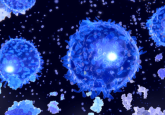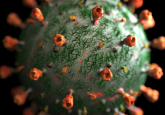Decrypting depression recovery using deep brain stimulation

A team of experts, formed of clinicians, neuroscientists and engineers, have made a remarkable breakthrough in treatment-resistant depression research. Published in Nature, the findings promise to significantly improve treatment for depression.
As of late, the important role of mental health in attaining global development goals has been increasingly recognized, and for good reason. According to the World Health Organization, one in five children and adolescents suffer from a mental health condition, with depression being one of the most common. Mental health conditions are key drivers of disability worldwide, with 1 in 5 years of disability now caused by mental health disorders. These are staggering statistics.
The study relied on deep brain stimulation (DBS), a neurosurgical procedure where implanted electrodes are used to electrically stimulate specific areas of the brain that control abnormal brain activity. DBS is actually the main surgery approved to treat Parkinson’s disease, but is still experimental for depression.
The team have demonstrated their ability to monitor anti-depressant treatment effect and progression in real time, meaning patients’ recovery and response to their treatment can be closely monitored. In the 10 patients with severe treatment-resistant depression who took part in the study and underwent DBS, the team were able to differentiate day-to-day fluctuations in their moods from potential depressive episode relapses.
The participants underwent DBS therapy for a total of 6 months, during which their brain activity was recorded and analyzed. The team identified a common brain pattern biomarker that changed as each patient recovered from their depression. The team also observed impressive response rates to the DBS therapy: after 6 months, 90% of participants had significantly improved depression symptoms, while 70% no longer satisfied the criteria for depression.
Explainable AI algorithms were used to identify and distinguish patterns in brain activity between recovery and depression, enabling the team to identify the measurable changes that induce an antidepressant response when patients received DBS therapy.
Helen Mayberg, Founding Director of the Nash Family Center for Advanced Circuit Therapeutics at Icahn Mount Sinai, remarked, “Beyond giving us a neural signal that the treatment has been effective, it appears that this signal can also provide an early warning signal that the patient may require a DBS adjustment in advance of clinical symptoms. This is a game changer for how we might adjust DBS in the future.”
Furthermore, using the explainable AI technique, the team confirmed an interesting phenomenon frequently observed by psychiatrists: that patients’ facial expressions alter alongside their depression recovery. The AI tools discovered unique objective changes in facial expressions that correlated with the shift from depressive symptoms to stable recovery. These facial expression patterns were concordant with the biomarker patterns in brain activity in patients in depressive and recovered states.
Overall, the team have identified a DBS biomarker that accurately and precisely reflects the recovery journey in patients with treatment-resistant depression. This biomarker records individual recovery trajectories and anticipates relapses, is consistent with facial expression patterns, and provides an objective measure of patient-specific recovery, which can support psychiatric observations and guide personalized management of depression.





